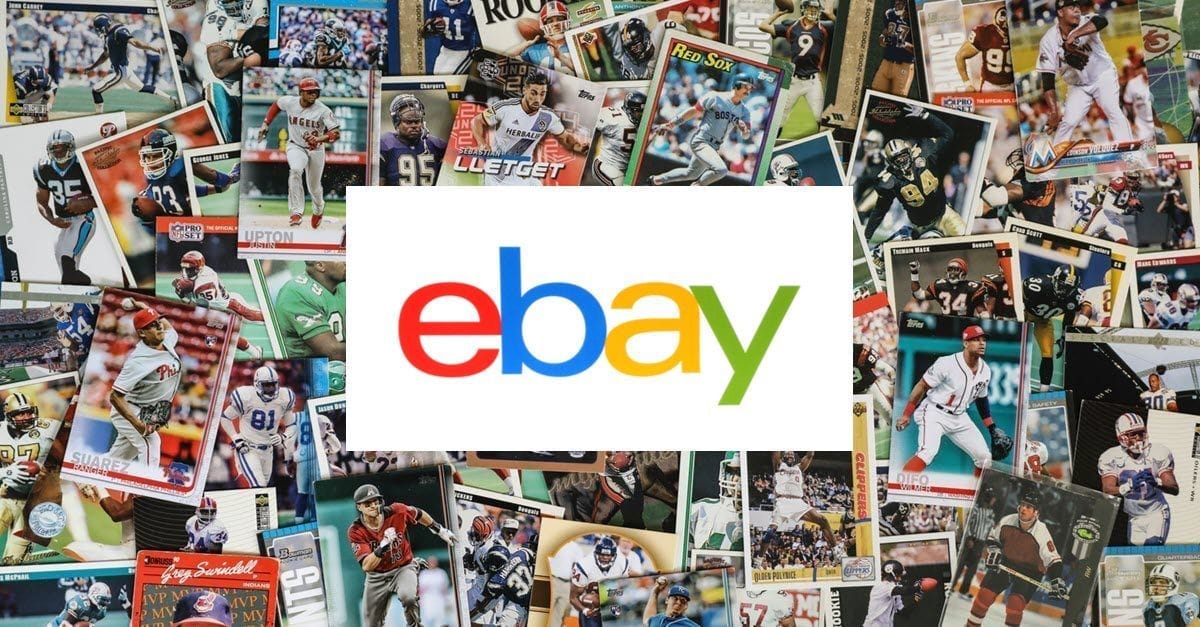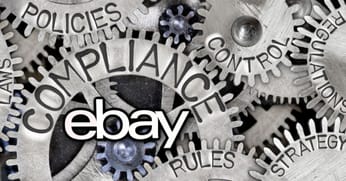eBay Catalog Failure Leaves Seller Accused Of Scam
eBay's legacy product pages have once again created unnecessary friction between buyers and sellers on the platform, leaving both sides a bit salty.

Received a message below from buyer, after payment was made based on a bogus offer. Buyer actually sent me a screen shot of the offer and threatened to report me to eBay if I didn't make good on it. The lower half of the ad was correct but the upper half with the title offering a case and searched item number was not. See screen shot below...
Here's what the buyer wrote - "I want to be clear- your original ad said a CASE of Popcorn salt, therefore, I am expecting a case to be shipped and if this turns out to be only one bottle, I would advise you to refund me money as I have screen shotted your ad and will contact ebay for fraud."
Has anyone ever experienced anything like this? Is this an eBay glitch?
No dear seller, this is not a glitch - it's the sad leftovers of ex-CEO Devin Wenig's failed attempt to compete with Amazon's Buy Box.
This buyer unfortunately landed on an eBay product page (you can tell by the "p" in the URL) and you can clearly see why they thought they would be receiving a case of 12, despite the very low price being shown that wouldn't likely make sense for a case price.
To try to replicate Amazon's Buy Box experience, eBay selects one featured seller that will get the sale if the buyer clicks Buy It Now or Add To Cart from this screen, or they can click on See all listings to be shown multiple seller options.
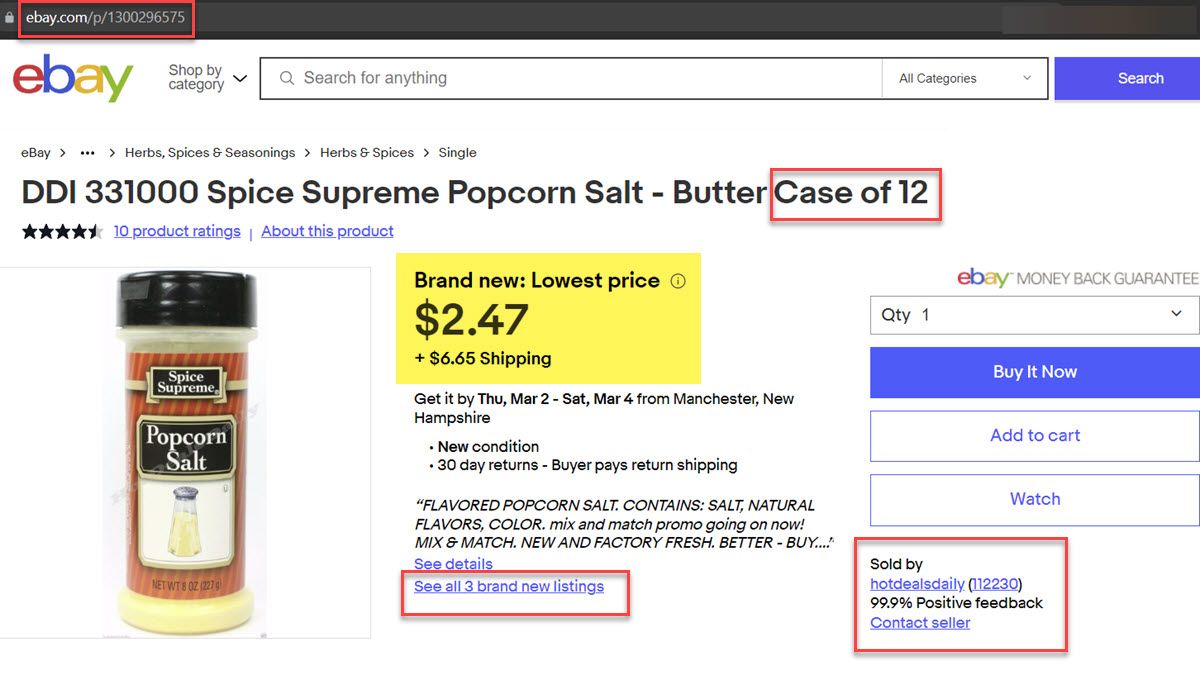
The problem? When you click on "see all 3 brand new listings", it becomes clear none of these sellers are selling a case of 12 - they are all a single bottle.
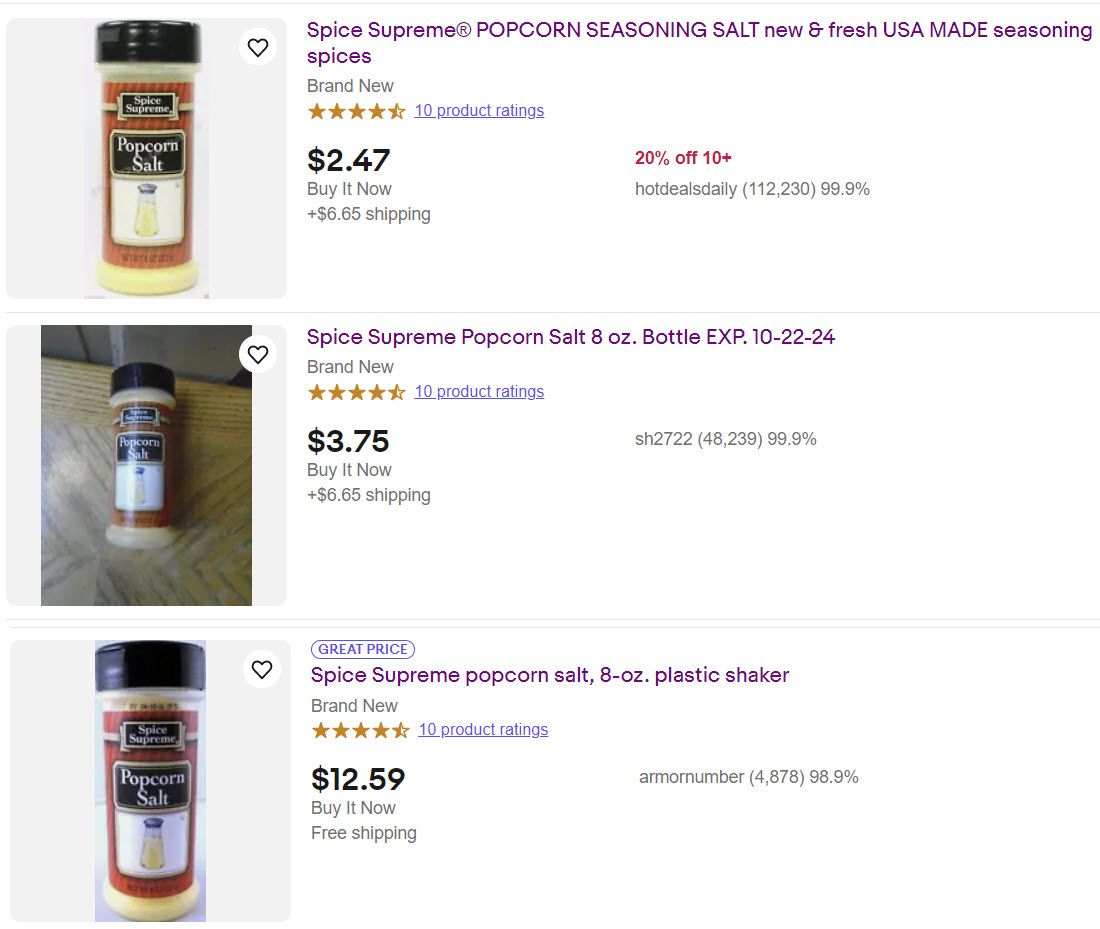
But what if the buyer clicked Buy It Now or Add To Cart from that product page?
It does change the title to reflect the information from that seller's actual listing page, instead of the product page, in the checkout but many buyers may not notice that difference and simply complete checkout thinking they will receive a case of 12.
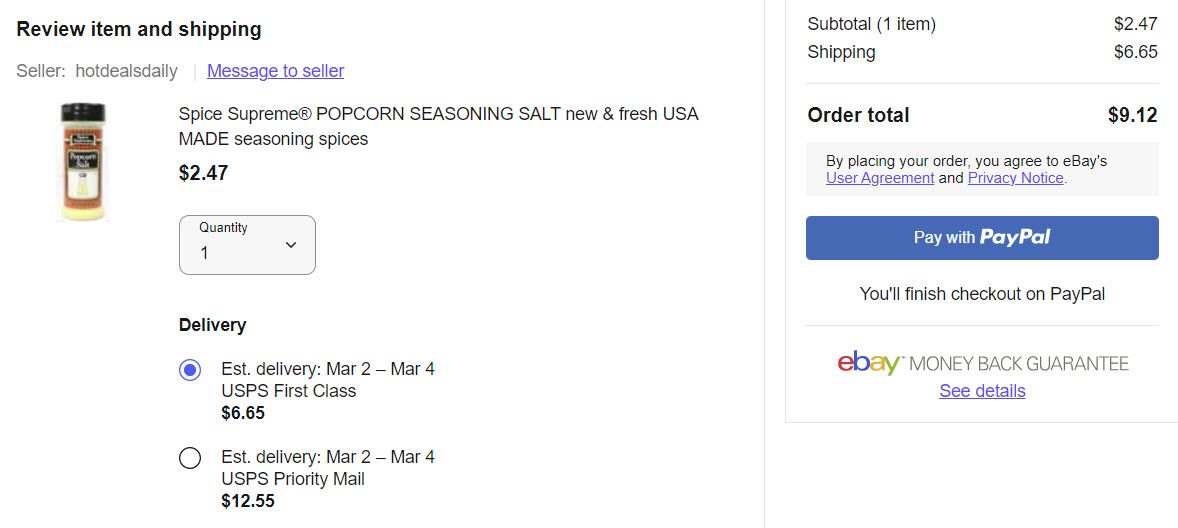
This was all part of Wenig's big structured data and catalog push, as he explained in the Q2 2019 earnings call (emphasis mine).
On the first part, I think we continue to evolve our catalog and structured data approach, and it's really both top down and bottom up and I'm very excited about the bottom up. The top down has been what we've been progressing and still are, it's really about attachment to products, and that's really important.
What's also important are the attributes of those products. The aspects, the bottom up, like the characteristics of a phone, here is the memory, here is the color. And what we see is that as our product listings have more richness in those descriptions and in those attributes, they convert better, in part that's because they attach to buyer searches better.
So, we are encouraging and in some cases mandating, sellers add more to those products listings. And then, we are incorporating that in the search and that's driving better conversion.
And you'll see us continue to make it easier for sellers to contribute. And having our search engine on the buyer side, pick up those attributes more and more aggressively over time. And again, we will have more to say about that next week at our big seller event. But we're really pleased and excited about the way forward on our catalog and structured data.
That's right - in furtherance of his grand cataloging scheme, Wenig made it mandatory for many sellers to provide structured product data, like UPC codes.
And that's where this trouble likely started - eBay did not do anything to verify that data sellers were entering was correct, so often one seller may provide the same UPC code for a case pack as other sellers were using for single items...and if that's the information eBay pulled to create the product page then every seller listed would be advertised as selling a case, whether they really are or not.
As one community member explained in that thread:
Your individual listing may be improperly linked to that product page by the product number. Sometimes different versions of a product (or different quantities of the same product) use the same product number, and the result is confusion.
Multiple individual listings are linked to a single product page so that buyers can purchase from many sellers through that same page; when one seller sells out, the next seller's listing appears as the default purchase for that product page.
If the buyer is looking at the product page rather than the individual item listing, it may appear to the buyer that the buyer is ordering a case of twelve rather than a single item.
For best results, never purchase directly from the product or catalog page -- always open an individual listing to make sure what the seller is offering matches what you are looking for.
That is good advice indeed, but how can you educate a buyer about that before purchase?
eBay does seem to have cleaned up and gotten rid of a lot of the internal navigation that would lead a buyer to these pages, but they can still be easily found through external search engines - and that is actually by design, as other community members pointed out.
While product pages can still be pulled up on eBay, I've found you typically have to go through the breadcrumb trail at the top of an individual listing page. eBay abandoned the site wide mission of forcing search results to pull up product pages because there were too many problems with it and too many complaints when buyers did not get what they were expecting from sellers and sellers having to deal with all the claims.
Product pages are mainly found by buyers through external search engines.
Search engines like Google give preference to pages that have been around for a long time and that have many other popular pages linking to them. The transient nature of most eBay listings tends to mean eBay pages rank much lower than other sites' pages, and the eBay pages that rank highest are often the oldest and most likely to be sold out or ended already.
The product page was designed to be a permanent page that maintained a fixed address that search engines could easily find (and that would rank highly), and to which multiple individual seller listings could be linked to at any given time. When one seller's listing sells out, the next available seller's listing becomes purchasable through the product page.
That way a user searching for an item using a search engine always finds an available listing to purchase rather than finding a lot of sold, ended listings at the top of the search results.
The theory is a good one, but the execution leaves a bit to be desired. For one, the product page looks very similar to an item page, and buyers do not realize that the description they are looking at was not provided by the seller.
In many cases, the seller has no idea that the product page even exists, much less that the seller's product appears on that page. If there is any discrepancy between an item page and a product page, the buyer often thinks the seller is trying to pull some sort of scam, and the seller often thinks the buyer is trying to pull some sort of scam -- each is looking at an entirely different page and wondering what the other person is talking about.
In this case, the seller did what the buyer asked by simply refunding and canceling the order - "if this turns out to be only one bottle, I would advise you to refund me money."
But it's hard to really see that as a "win" when the seller is out the sale and the buyer is left believing they were the victim of a scam instead of failed product design.
While I can definitely understand why eBay may have a difficult time deciding how to handle these pages going forward, I can't believe simply allowing them to continue to exist as is, providing a negative buyer and seller experience, is the best choice.
Have misleading or confusing product pages hurt your eBay buying or selling experience? Let us know in the comments below!



